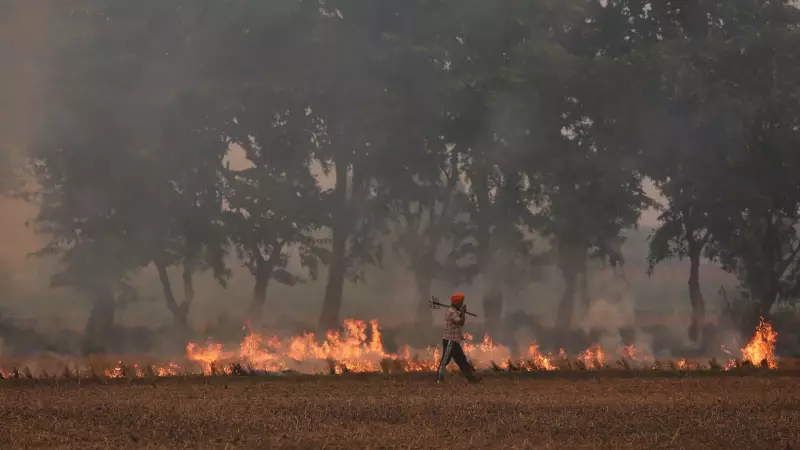
The national capital is staring at a severe air pollution crisis as farm fires in neighbouring states continue to rage, threatening to push Delhi's already precarious air quality into the 'severe' category in the coming days.
The Perfect Pollution Storm
Meteorological conditions are conspiring with human activities to create what experts fear could be one of the worst pollution episodes of the season. Northwesterly winds are now carrying smoke from stubble burning incidents directly toward Delhi, while calm nighttime conditions prevent the dispersal of accumulated pollutants.
The situation has become so concerning that the Commission for Air Quality Management (CAQM) has invoked Stage II of the Graded Response Action Plan (GRAP), indicating that air quality is likely to deteriorate further.
Alarming Spike in Farm Fire Incidents
Recent satellite data reveals a troubling surge in stubble burning cases:
- Punjab recorded approximately 1,068 farm fires on a single day
- Haryana reported significant burning activity in key districts
- The cumulative count for this season has already crossed worrying thresholds
What makes this year particularly dangerous is the concentration of fires in Amritsar, Tarn Taran, and Patiala – regions positioned perfectly to send their smoke directly into Delhi via prevailing wind patterns.
Health Implications for Delhi Residents
Medical professionals are sounding the alarm about the potential health consequences:
- Increased risk of respiratory illnesses and asthma attacks
- Aggravation of existing cardiovascular conditions
- Higher vulnerability for children, elderly, and outdoor workers
- Potential long-term damage from prolonged exposure to PM2.5 particles
Hospitals across the capital are preparing for a surge in patients complaining of breathing difficulties, eye irritation, and throat infections.
Government Response and Measures
Authorities have rolled out a multi-pronged strategy to combat the impending crisis:
- Strict enforcement of pollution control measures at construction sites
- Enhanced public transportation services to reduce vehicular emissions
- Regular water sprinkling on roads to settle dust particles
- Continuous monitoring of industrial emissions
However, experts emphasize that without effective control of stubble burning in neighbouring states, these measures can only provide temporary relief.
The Road Ahead
With weather forecasts predicting unfavourable conditions for pollutant dispersion over the next several days, Delhiites must brace for challenging times. The convergence of local pollution sources with transported smoke creates a toxic cocktail that could keep the city shrouded in hazardous haze.
Environmental agencies continue to monitor the situation closely, while residents are advised to take necessary precautions, including using N95 masks and limiting outdoor activities during peak pollution hours.





